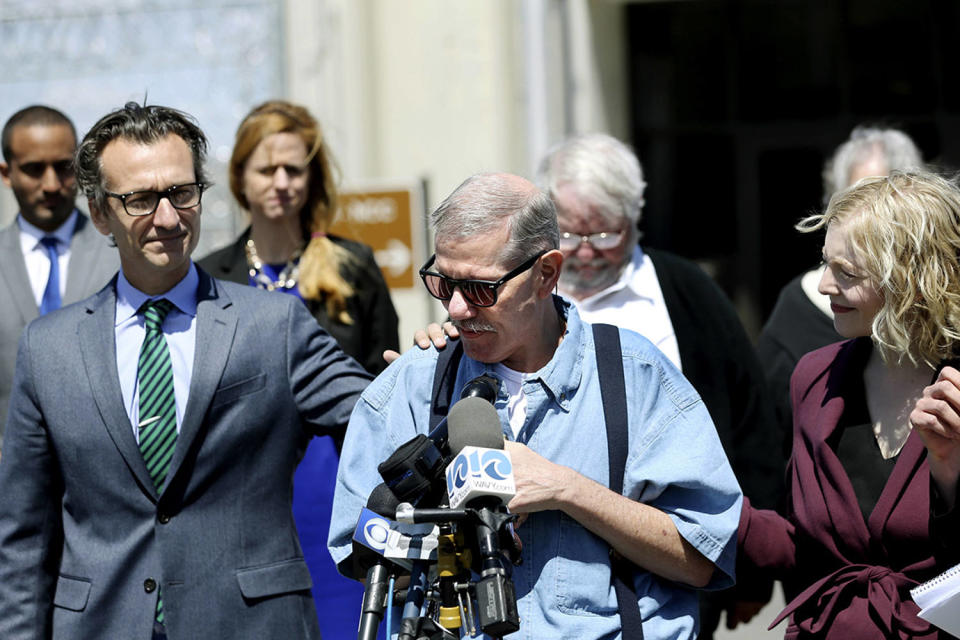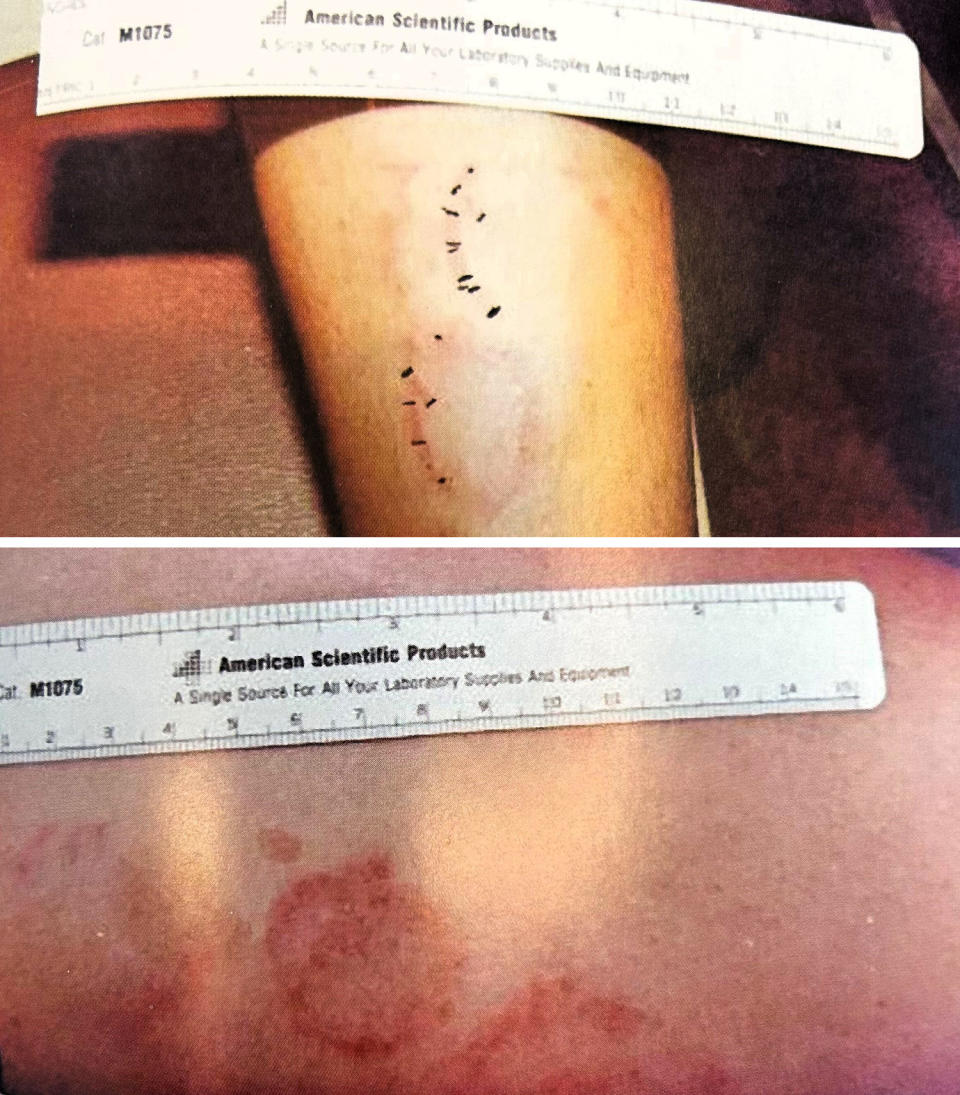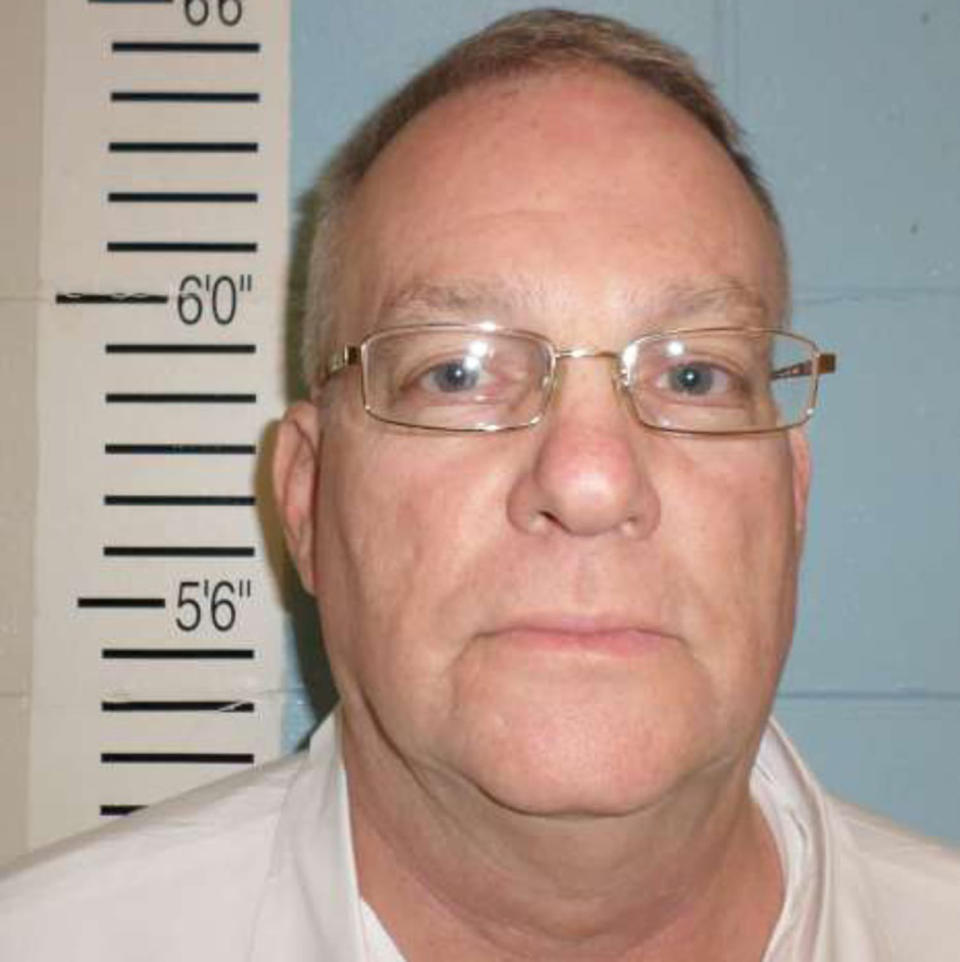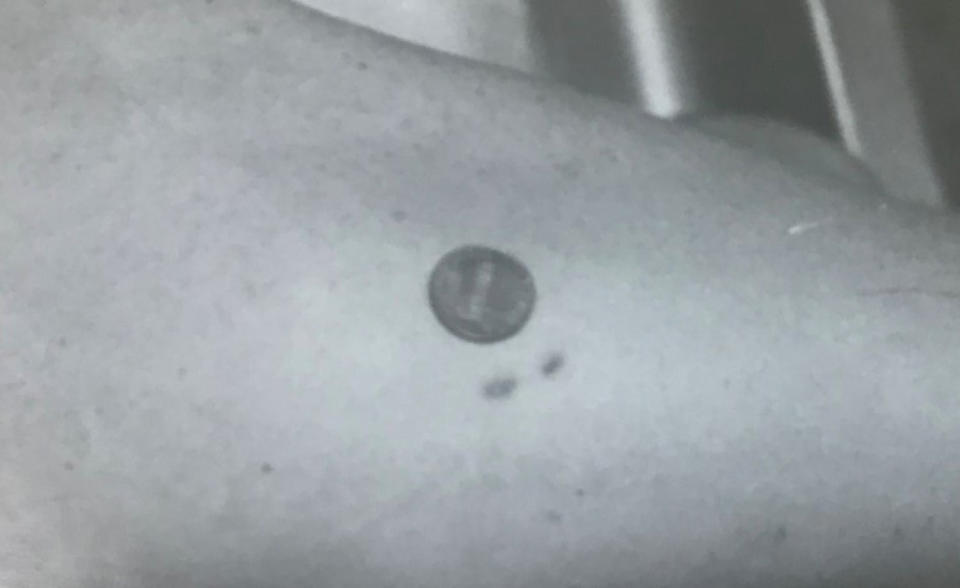Even now, as a free man, Keith Harward struggles to explain what it was like to sit in the courtroom while on trial for a rape and murder he knew he didn’t commit and watch a considered expert witness testify definitively about that bite. The marks on the victim’s leg matched his teeth.
“To this day, I still wonder what was going on,” he told NBC News from his home in North Carolina. “Sometimes I break down and scream because I can’t explain it to you or to anyone other than people in my situation.”
There was no evidence linking Harward to the horrific 1982 crime, but he was among a group of sailors aboard a Navy ship in dry dock in Newport News, Virginia, who were required to take impressions of his attacker’s teeth because he was wearing a Navy uniform. . Two forensic dentists told two separate juries that Harward’s teeth matched “with scientific precision” the bite mark on the rape victim’s skin. Harward spent 33 years in prison until, with the help of the Innocence Project, he was exonerated in 2016 by DNA evidence implicating another sailor as the killer.

The Innocence Project says Harward was among at least 36 people exonerated after being wrongfully convicted based on now-debunked bite mark comparisons. One of them, Eddie Lee Howard, was on death row in Mississippi when he was released in 2021 after crime scene DNA matched someone else.
Four separate government scientific agencies have concluded that bite mark analysis has no basis in science. This includes the President’s Council of Advisers on Science and Technology; “Available scientific evidence shows that examiners are not only unable to identify the source of a bite mark with reasonable accuracy, but are even unable to consistently agree on whether an injury is a human bite,” he explained in 2016. .” The National Institute of Standards and Technology, the gold standard for measurement science, said in 2022 that bite mark forensics “does not have an adequate scientific basis” because “human dental patterns have not been shown to be unique at the individual level.”
A 2016 study found that self-identified experts were unable to distinguish between human and animal bite marks. Others have documented how scars on human skin change over time through healing or decomposition.
“People who were board certified didn’t agree on what a bite mark was,” said Adam Freeman, a forensic dentist who once “drank the Kool-Aid” of bite mark analysis but has since become one of the biggest critics in the profession. “If a science is not science, if it is not reproducible and if it is not reliable, the courts should not allow it.”


However, bite mark analysis has been used in thousands of cases. Although increasingly successfully challenged by defense lawyers, no court has ruled this inadmissible.
“There are still a lot of people out there because of bite mark statements, and we don’t even know how many people are still in jail,” Freeman said. “It is truly appalling that this is still allowed to be used in civil courts where matters of life and liberty are involved.”
Chris Fabricant, an Innocence Project attorney and author of “Junk Science and the American Criminal Justice System,” said his team has consistently blocked the presentation of bite mark evidence in courts across the country, even as the court continues to push for the exoneration of incarcerated defendants. It is based on discredited discipline. However, he said that none of the forensic dentists who testified based on outdated methods were held accountable.
“My anger is what gets me out of bed every day,” he said.
“I can tell you that literally thousands of human years have been spent in prison,” Freeman said, citing the inaccurate testimony.


There is no data showing how often bite marks are used in lawsuits. Anecdotal evidence suggests the number is rapidly declining, but prosecutors still sometimes attempt to leave bite marks at trials.
Professional associations of forensic dentists responded to the NIST report by saying they agreed with “many details” in the report and that they “recognize the issues surrounding bite marks and acknowledge past concerns”; NIST’s rejection of bite mark evidence was far-reaching.
“Critics continue to ignore the steps forensic odontology has taken to address these concerns. It is important to re-emphasize that cases in which dentists misidentified bite perpetrators occurred in the 1980s and 1990s. “Today’s dentists do not meet the standards that were in effect at the time, but we continue to be judged by them.”
‘Disgusting place’
Charles McCrory is spending 38 years behind bars after being convicted of murdering his wife. The bite mark expert in his case recanted his testimony, saying he knew he could no longer tell whether the bite mark on the victim matched McCrory’s teeth. But Alabama courts refused to release McCrory.


The Alabama Court of Criminal Appeals ruled earlier this year that the jury could decide for itself whether the bite marks matched; This finding suggests that such perceived visual matches, ignoring science, cannot be valid. The court also included other evidence, including a witness who said he saw McCrory’s truck at the house at the time of the murder. There is no physical or forensic evidence linking him to the crime.
Three years ago, after bite mark evidence in his case disappeared, McCrory was offered a deal: Plead guilty and go free. He refused.
“I refused to take him because I didn’t kill him,” McCrory told NBC News from the prison facility. ‘I did not kill my wife’


The Innocence Project is currently pursuing appeals through the federal courts.
“Prison is hard; most of the stories you see in the news about prisons, especially Alabama prisons, are true,” McCrory said. “This is a disgusting place and not a place I would wish on anyone.”
“I don’t give up hope,” he said. “And of course there are days of disappointment and days of demoralization… but I believe there is a truth in that that will come out somewhere and you can’t give up. “This is not an option.”
Released in 2016, Harward is living proof that a second act is possible after decades of wrongful imprisonment. The 67-year-old man, who was awarded $1 million in damages by Virginia, lives quietly in rural North Carolina, taking occasional RV trips with his girlfriend and obsessing over smartphones and social media.
But he also goes on to talk about the bite mark evidence that stole half his life and prevented him from attending his parents’ funerals.
“This is garbage. This is bullshit. “It doesn’t mean anything,” he said.
A few years ago, he went to a conference of forensic dentists in New Orleans to confront them about the bite marks. Many are understanding, he said, but there is also an old guard that clings to the past.
“How many times do you need to be told you are wrong before you give up?” said.
This article first appeared on NBCNews.com.